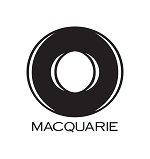Gearing Strategies Revisited
Presented by

As we approach the end of the financial year, investors and their advisers may be starting to consider the range of investment options and strategies available in the market, which involve borrowing and the prepayment of interest. Property investing aside, clients continue over recent years to tread somewhat warily in how they approach borrowing and interest pre-payment for equities. This has resulted in the evolution of products tailored for the more risk aware in Australia.
This appears to be somewhat different to China. The Sydney Morning Herald recently reported that in China, “outstanding margin loans surged to 1.08 trillion yuan ($210 billion) as of January 13 from about 400 billion yuan at the end of June”1. The rapid growth in margin-lending (and corresponding growth in local equity prices) has resulted in authorities suspending the lending of money to new equity-trading clients.
Despite relatively stable local equity market conditions, the growth in margin lending in Australia remains modest. According to the RBA2, total outstanding margin loans increased by approximately 4% in the 2 years to December 2014 yet over the same period, the number of clients holding a margin loan facility fell by approximately 9%. Gearing ratios remain low at 27%, which is close to 20% below than that in December 2007 and well below the level at which an investor may expect to be exposed to margin-call events.
Beyond margin lending, investors can also choose from a range of structured investment products which can provide leveraged exposure to a range of underlying assets and markets, most often with an overlay of loan principal protection. This means while the investor must pay interest on the loan, they will not be required to repay a set percentage of the loan (often 100%) from their own funds, regardless of what happens to the underlying assets over the term of the investment.
Over the past few years, these products have evolved considerably to meet the risk-aware requirements of investors and advisers. They include protected equity loans, which provide 100% leverage and loan principal protected exposure to ASX-listed securities, or synthetic products which can provide thematic exposures to a range of indices, markets or other assets, both domestic and offshore.
Investors and advisers can now choose from investment products which can now provide a greater degree of certainty and flexibility through one or more of the following features;
- An ability to walk-away from the loan throughout the term should asset values fall or should circumstances change
- Loan principal protection both during the term, and at maturity
- Fixed and known cash flows prior to investment (and therefore a known worst-case cost to the client)
- Payoff structures which provide the best of two or more underlying investment returns
- Given the loan principal protection, a potentially greater return on at risk capital/funds when compared to full recourse gearing such as margin loans
Rather than simply looking to the possible upside from a geared strategy, investors and advisers now have a greater focus on worst-case outcomes; including an understanding of any risk that the asset may be worth less than the loan throughout the term or at maturity, whether the structure is subject to “cash-locking” or variable returns as a result of volatility, and most simply – what is the total cost to the investor if the underlying investment or asset does not increase in value?
It remains wise to be cautious and there are also a number of current factors which can help mitigate the higher risk which a gearing strategy may entail - historically low interest rates, coupled with below-average volatility, means that the break-even returns on geared strategies may be quite low, even with investment products which provide limited recourse or protected loan principal.
Ultimately, this should be at the heart of any potential gearing strategy – do I think the potential return from the investment has the potential to exceed the cost?
1 “China shares plummet on margin lending crackdown”, Sydney Morning Herald, 19th January 2015
2 RBA Statistical Tables, Margin Lending - D10, 19th February 2015
This article has been prepared by Macquarie Bank Limited ABN 46 008 583 542 (Macquarie). To the extent that this article contains general advice, it does not take account of any person’s objectives, financial situation or needs. Before acting on any general advice you should consider the appropriateness of the advice having regard to these matters.
This article has been prepared in good faith and may be based on information obtained from sources believed to reliable but no independent verification has been made, nor is its accuracy or completeness guaranteed. To the extent permitted by law, the Macquarie Group does not give any warranty of reliability, accuracy or completeness of the information contained on this website and does not accept any responsibility in any way (including negligence) for errors in, or omissions from, the information on this website. Any views or opinions expressed in this article may be solely those of the author and are not necessarily those of Macquarie. The author or Macquarie is under no obligation to update or correct this information.
We recommend investors obtain financial, legal and taxation advice before making any financial investment decision.
Subscribe to 
Never miss the stories that impact the industry.



